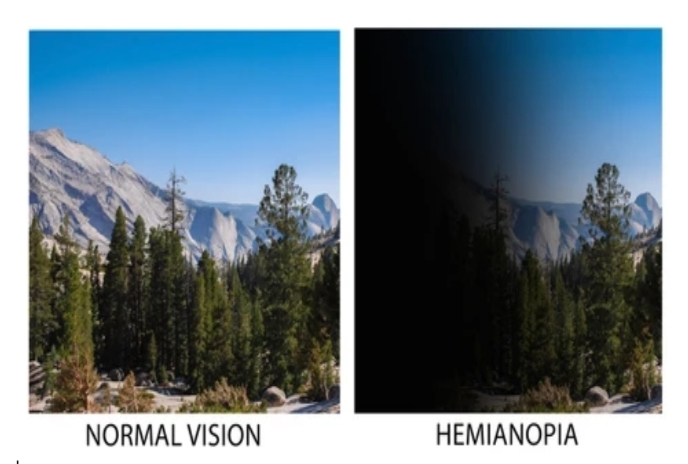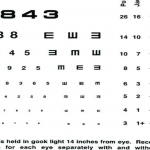A person with low vision is one who has impairment of visual functioning even after treatment of an operation and standard refractive correction and has a visual acuity of less than 6/18 to light perception or a visual field of less than 10 degree from the point of fixation but who uses or is potentially able to use vision of the planning and execution of a task.
VISUAL IMPAIRMENT:
• PARTIAL BLIND [6/24 TO 6/60]
• LOW VISION [<6/18 TO PL ]
• SUBNORMAL [ 6/18 TO PL]
WHO(World Health Organization) CLASSIFICATION DEFINES LOW VISION AS CORRESPONDING TO:
• VA of less than 6/18 but equal to or better than 3/60.
• Corresponding VA less to less than 20 degree in the better eye with best possible correction .
LOW VISION :
The best corrected VA in the better eye less than 6/18 and the vision field less than 20 degree from the point of fixation.

VISION IMPAIRMENT:
Refers to condition with decreased VA from blindness to partial sight.
PARTIAL BLINDNESS:
THE BEST CORRECTED VISION ACUITY IN THE BETTER EYE LESS THAN 3/60 0R VISUAL FIELD LESS THAN 10 DEGREE FROM THE POINT OF FIXATION.
COMPLETE BLINDNESS :
It is defined as no usable vision with exception of light perception.
FUNCTIONAL EFFECT OF LOW VISION:
Loss of central vision.
Loss of peripheral vision.
Glare and contrast.
GRADES OF VISUAL IMPAIRMENT:
Category of visual Impairment (low vision) Visual acuity with best possible correction (Maximum less than the) Minimum equal to or better
0
6/6 (Normal) 6/18
1 6/18 (Visual impairment) 6/60
2 6/60 (severe visual impairment) 3/60- CF at 3m
3 3/60 – CF at 3 m (Partial blind) 1/60-CF at 1m
4 1/60 – CF at
1 m (Blind) Light perception(PL)
5 No PL (Total blind) ————–
MAIN CAUSES OF BLINDNESS IN 50+ POPULATIONS ARE AS FOLLOWS:
CATARACT – 62.6%
REFRACTIVE ERRORS-19.7%
CORNEAL BLINDNESS- 0.9%
GLAUCOMA- 5.8%
SURGICAL COMPLICATION- 1.2%
POSTERIOR SEGMENT DISORDERS- 4.7%
OTHERS-5.0%
HOW TO PREVENT LOW VISION?
Try the 20-20-20 rule:
Every 20 minutes, look away about 20 feet in front of you for 20 seconds.This short exercise can help reduce eyestrain. Clean your hands and your contact lenses-properly. To avoid the risk of infection, always wash your hands thoroughly before putting in or taking out your contact lenses.
NOTE: low vision is vision loss that cannot be corrected with glsasses , contact lens and surgery. It isn’t blindness as limited sight remains.
TYPES OF VISION LOSS:
1.Peripheral field loss
2.Central field loss
3. Overall blurred vision
4. Hemianopic defect.

1.Peripheral vision loss: This groups refers to the patients who have lost their peripheral field of vision, totally or partially.
These defects are likely in the following pathologies :
Chorioretinitis, Colobomas, Glaucoma, Degenerative myopia, Optic atrophy(neurological), Retinitis pigmentosa, Retrobulbar neuritis etc.
The patients with peripheral loss of field will show some following sings;
• Mobility problems both indoors and outdoors.
• Slow dark adaptation
• Poor vision in dim light
• Poor near reading vision
• Glare and photophobia
2.Central vision loss: This group refers to patients who have total or partial loss of central field of vision.
These field defects are likely in the following disease: Chorioretinitis, diabetic maculopathy, hypertensive, hypertensive retinopathy, macular degeneration, degenerative myopia, optic atrophy(congenital), retrobulbar neuritis etc.
Such patients will show following sings:
• Partial perception of people and objects
• Cannot discriminate fine details for distance amd near
• Poor color vision
• Further reduction of visual acuity in bright light
3.Overall blurred vision: It means that the person has diminished visual acuity and is unable to perceive details.
Such patient will show following signs:
• Reduced visual acuity
• Reduced contrast
• Poor night vision
• Glare and photophobia
4.Hemianopic defects: It is a condition in which a person sees only one side-right or left- of the visual world of each eye.
The person may not be aware that the vision loss is happening in both eyes, not just one.
Signs:
• Distorted sight
• Double vision
• Difficulty understanding what you are seeing
• Vision that appears dimmed
• Moving the body or head away from the affected side
• Visual hallucinations.








